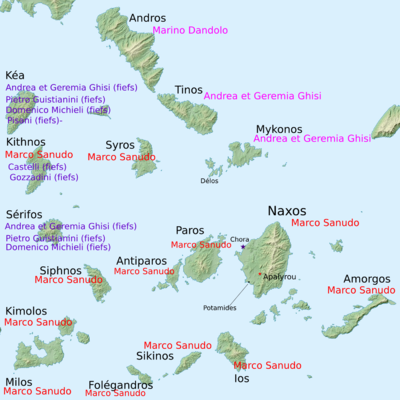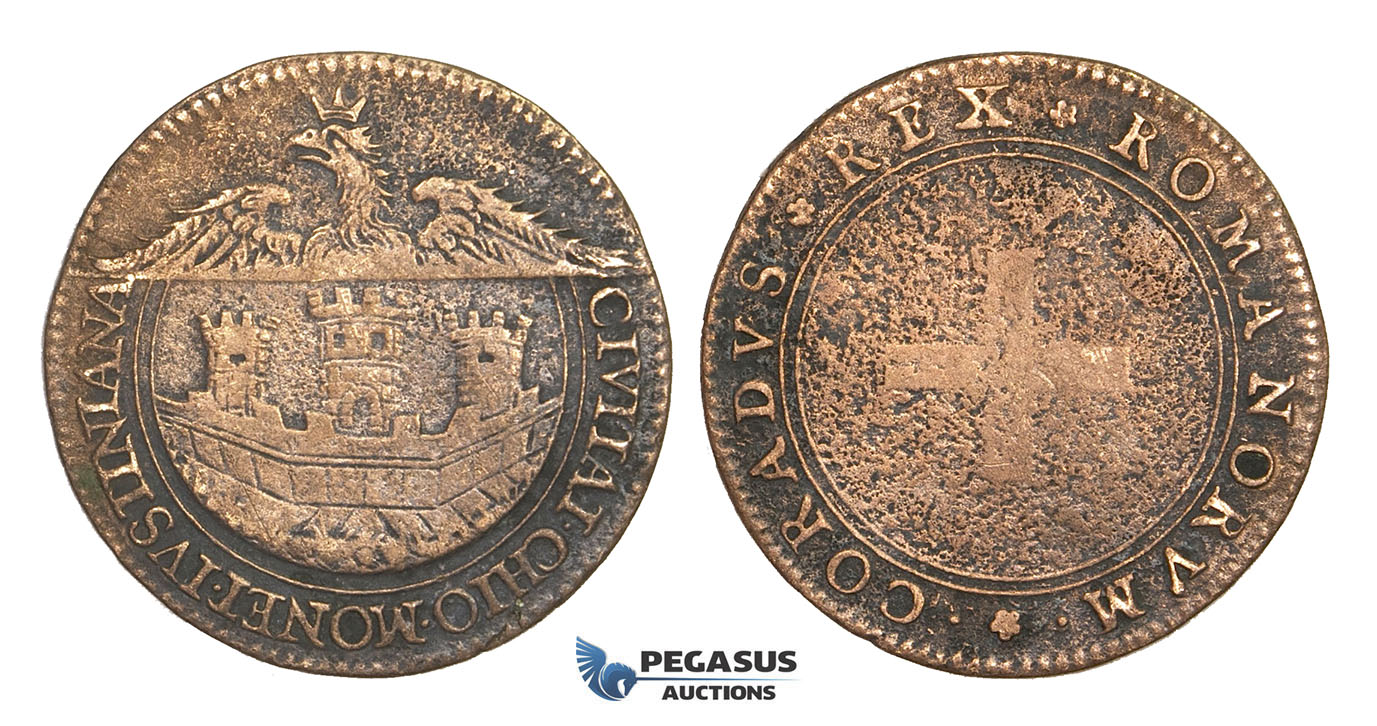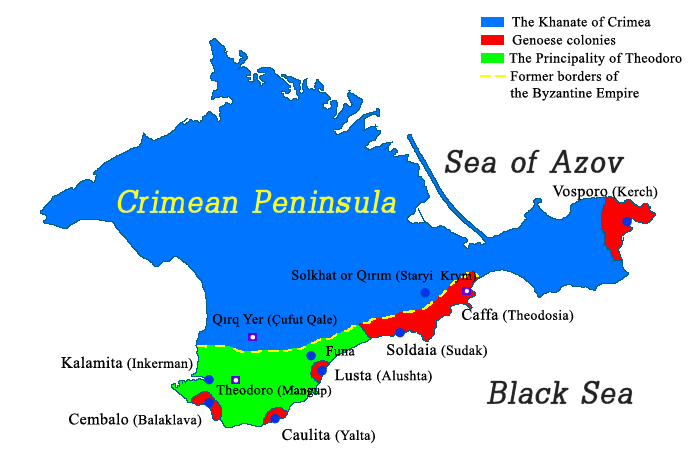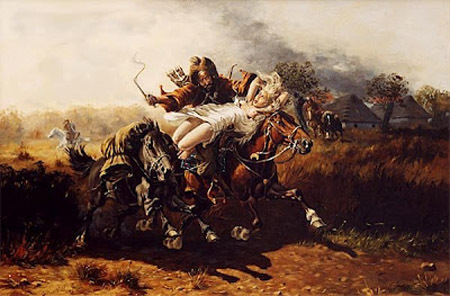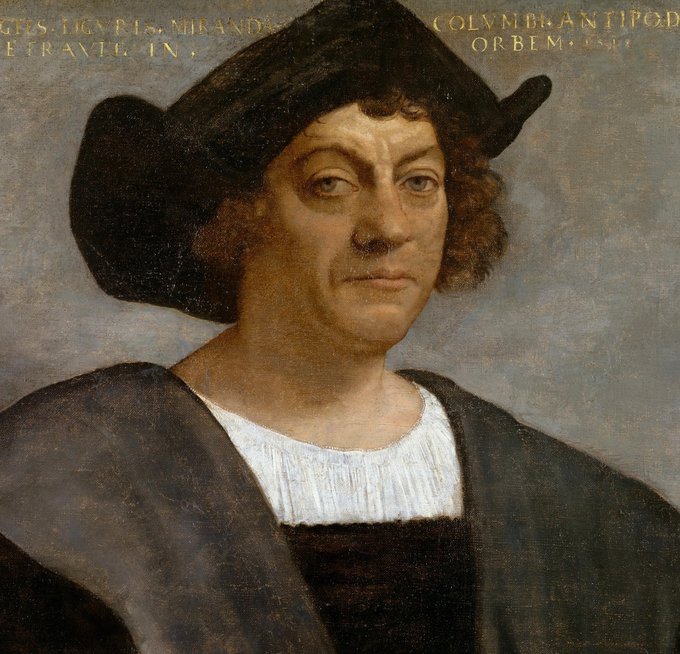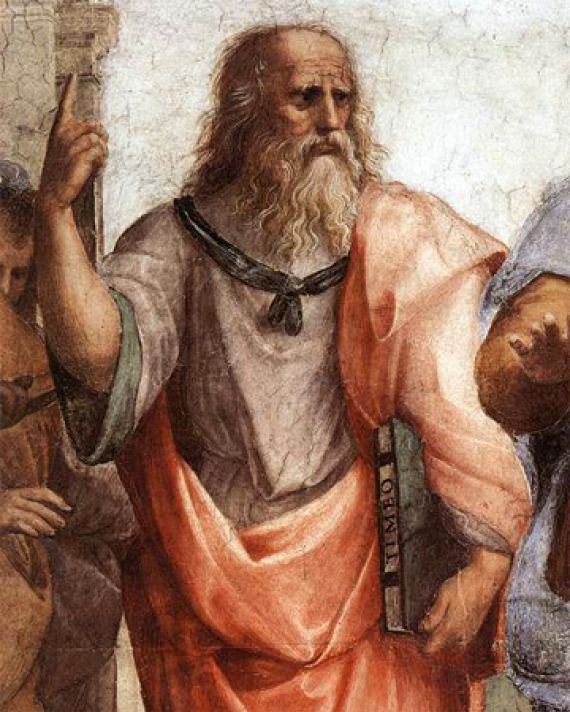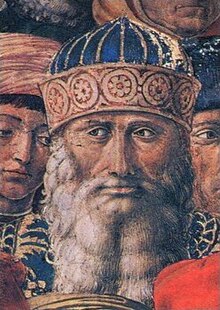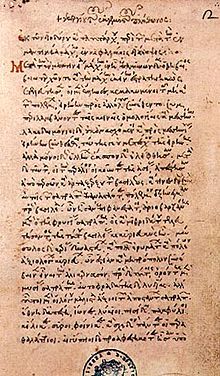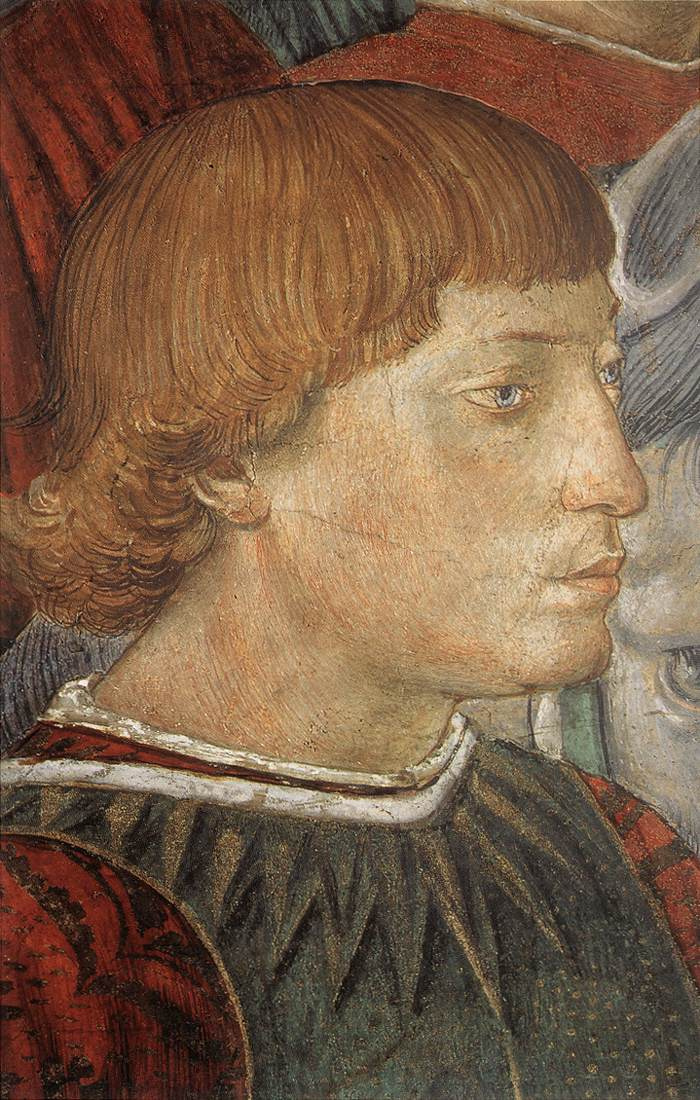Sharpe books tell me it becomes commercially unprofitable to publish paperbacks beyond a certain page count (perhaps especially for low volume niche historical fiction titles). For that reason the authors note at the back of Porphyry and Bones is shorter than I had originally intended. The blog is an opportunity to publish the full note and go into more depth on the history behind the fiction. Naturally there will be spoilers.
Author's Notes
The necessities of the narrative
prevented Porphyry Ash from including the fate of Loukas Notaras, so it was
satisfying to revisit that point in time. As so often,
contemporary sources differ on the exact events and motives for the sudden
arrest and execution of the Byzantine Megas Doux and Ottoman Grand Vizier just a
few days after Constantinople's capture. Chalkokondyles records that Loukas
Notaras requested his son be executed first so he would know he had not reneged
on his faith. That plea fell on deaf ears and Jacob Notaras disappeared into
the palace school along with many other sons of Byzantine nobles.
Six years later, Jacob Notaras
resurfaces in the historical record having escaped to Italy and approached
Cardinal Bessarion for help. Bessarion brought him to the Council of Mantua in
1459 (Pope Pius's unsuccessful first attempt to organise a crusade). By then the
Bank of St George had released the Notaras fortune to Anna and it appears
Bessarion acted as family mediator. An arrangement was reached in January 1460
whereby Anna agreed to share the interest income with her brother. They
reconciled enough that Jacob acted as Anna's representative for some of her
petitions to the authorities of Siena and Naples.
In around 1474 Jacob married a
woman called Zampeta. Much of the information about the Notaras family has
survived thanks to the frankly dreadful relationship between Anna and Zampeta,
which explodes across the testimony of several court cases following Jacob's
death. In March 1489, Zampeta filed a petition before the judges of the
Venetian Procurator alleging that shortly before his death in Ancona, Jacob
sent his sister Anna "a box of law books of different kinds, both on
parchment and on paper". She demanded that Anna hand over these works to
her or be ordered to pay the sum of 120 ducats. Anna acknowledged receipt of
this box but contended that she had purchased most of the books lent them to
Jacob. Anna won this court case and on 8 May 1490, Anna filed a petition
against Zampeta, alleging that she had entered the Ca Notaras and stolen a
valuable copy of Petrarch, which Anna had bought from Thomas Palaiologos in
1462, valued at 51 ducats. The judge ruled in Anna's favour again.
Around this time Anna also
attempted to publicly rehabilitate her father's name among the Byzantine
diaspora. Ten years after its invention in Germany, Italy was in the grip of a
mania for the printing press. Anna herself funded the first works dedicated to
printing exclusively in Greek (the Kalliergis press in Venice) and she employed
a humanist (John Moskhos) to write a pamphlet entitled 'A Funeral Speech in
Honour of the Most Glorious and Most Honourable Grand Duke, the Late Lord
Loukas Notaras' which was clearly an attempt to refute the public perception of
her father as having been somehow disloyal or even a traitor.
The exact reason why the Sultan
changed his mind about Loukas Notaras and ordered his execution varies considerably
between sources depending on the axe it has to grind. In the case of Halil
Candarli, the young Sultan clearly saw a chance to cement his grip on power. It
heralded a dramatic shift in the way the Ottoman empire was run.
The first man to hold the title
of Grand Vizier had been Halil Candarli's grandfather. By 1453, through its
ninety-year history, the title had been held by just seven men, all ethnic
Turks, of which four were members of the Candarli family. Following Halil
Candarli's execution, Mehmed went through seven more Grand Viziers in less than
thirty years and all but one of these were non-Turks sourced through the devshirme
system.
Despite the seemingly high
turnover of these Grand Viziers, one stands pre-eminent among them. The seminal
biography of Mahmud Angelovic by Theoharis Stavrides is appropriately titled
'The Sultan of Viziers' and was a key source for this novel. The Serb-born
Mahmud Angelovic became Grand Vizier in 1456. He was well connected - his
cousin George Amiroutzes was chief minister in Trebizond and together they
conspired the capture of that fortified city without a serious fight. His
brother Mihail Angelovic was similarly placed in the Serbian court but there
the Angelovic had to contend with the Brankovic family. A similar scheme to
hand Smederevo to Ottoman troops failed. Mihail's imprisonment forced Mahmud
Angelovic to attack and subdue Serbia in 1459. The open animosity between
Mahmud Angelovic and Mara Brankovic is my invention, but I feel it quite
plausible given this history between the families in their homeland.
Mahmud Angelovic fell from favour
in 1468 over the misuse of power and possible embezzlement in newly conquered
Karaman. I have shifted dates by four years to link that fall to the fictional plot
in Ragusa. He regained the top office in 1472, the only Grand Vizier who Mehmed
gave a second chance to - but that is a tale for another time...
Maut Bassa is not an invention.
There really was communication between Venice and a traitor within the Ottoman
court using that alias during this period. The first record in the Venetian
state archives does not appear until December 1470, when the council convened
to discuss a proposal from 'Maut Bassa' delivered via a go-between named
Alessio Span. The traitor had offered to
hand over the Black Castle of the Dardanelles and the Ottoman fleet in return
for an annual pension of 40,000 ducats and title to the Morea. Correspondence
continued sporadically for four years but never amounted to anything. Who was
behind Maut Bassa and whether the offer was genuine remains a mystery, but
circumstantial evidence points squarely to it having been Mahmud Angelovic.
The abortive crusade of 1464, almost
four hundred years after the first, represented the last attempt by a Pope to take
up the cross and reconquer the Levant. Having found little interest from
western princes and dukes, Pius II insisted on leading the effort himself,
despite his failing health. He died, as I described, at the point of departure
in Ancona. Most of his Cardinals must have breathed a sigh of relief. There was
certainly no appetite to continue his legacy, which is probably the key reason
for Bessarion's poor turnout in the subsequent conclave.
Tentative peace feelers were put
out over the subsequent years, with Mara Brankovic and her sister Katarina
running what historian Donald Nicol describes as 'a kind of unofficial foreign
office' that maintained diplomatic relations and received ambassadors from
Ragusa, Venice and Constantinople. In 1471 Mara personally accompanied a
Venetian ambassador to the Porte for negotiations with the Sultan such was her
perceived influence. Mara also intervened in Mehmed's appointment of a new
Patriarch of Constantinople in 1465 when Symeon of Trebizond attempted to buy
the position. There is ample evidence that she viewed her role as protectress
of the Great Church in exile. Several monasteries including Chilandari on Mount
Athos received incomes directly from her purse & Bulgaria's Rila Monastery
obtained stewardship of the bones of St Ivan Rilski thanks to another of her
interventions with her step-son. There is some evidence that she maintained a
workshop of scribes and artists at her estate in Macedonia, not unlike Anna
Notaras's financing of the Greek printing press in Venice. Unlike the
characters in Porphyry and Bones, Anna and Mara probably never met, but
their life histories hold several Plutarchian parallels.
If I have maligned the historical
George Amiroutzes in my portrayal, it cannot be by much. Together with
Gennadius (George Scholarius) and Plethon (George Gemistus), Amiroutzes was a
member of the celebrated Greek delegation to the Council of Florence-Ferrara in
1437. Reportedly he was among the few members of the 600-plus delegation who
could speak Italian. There is evidence from the papal sources that he took a
bribe for his vote in favour of the church union. Subsequently he held high
office in Trebizond (protovestarius, perhaps even megas logothetes) and played
a controversial role in that city's surrender in August 1461. According to
several sources he used deception to persuade Emperor David IV Comnenus to open
the gates. He soon found himself a favoured member of Mehmed's court where he
composed some minor philosophical works and translated Ptolemy's Geography for
the Sultan. Additionally, he uncovered / fabricated correspondence between the
captive Trebizond royal family and the Persian court which would see David Comnenus
and his children executed in late 1463.
The account of the bigamous
marriage between Amiroutzes and the widow of Duke Franco Acciaioli of Athens,
is much repeated, as is the thuggish treatment of members of the Greek church
in Constantinople which the Grand Vizier and his cousin employed to try and get
their own way on the matter. Patriarch Joasaph did try to drown himself in a
cistern, but this took place in Easter 1464 and was not directly connected to
Amiroutzes. As well as a bigamist and traitor Amiroutzes was a gambler and is
said to have died with a dice in his hand sometime around 1470.
The independence and behaviour of
the Brankovic women in the novel might strike some as overly modern, but for
the most part their actions are grounded in fact. Katerina Brankovic, Contessa
of Celje, really did sell off her dead husband's lands in Hungary and then
undertake a grand tour of Italy, Corfu and Ragusa before settling at her sister
Mara's estate in Macedonia.
Equally their niece, Jelena
Brankovic, escaped the fall of Bosnia aided by Ivanis Vlatkovic and carrying
the bones of St Luke. As the Turks invaded, King Stephen Tomasevic sent his
family members off in several directions, but Jelena and the King's mother were
the only ones to escape the encircling Turk army. Jelena is more commonly known
as Maria of Serbia. She changed her name from Jelena to Maria (Mara) when she
married the Catholic king, but I felt it too confusing to have two characters
with the same name and stuck with Jelena.
Aside from the phantom pregnancy,
Jelena’s story in Frankincense follows the historical record. She lost the
relics during her flight to Ragusa, recovered them with Ivanis’s help and was
given sanctuary by the Ragusans on one of their islands (not necessarily
Lokrum) while the Republic decided what to do with her. Eventually Venice
received the bones in exchange for sanctuary at the monastery St Stephen Under
the Pines in Spalento. Subsequently she left Spalento and lived with her aunts.
Later in life Jelena was involved
in a number of contentious legal cases, defrauded Ragusa out of a sum of gold
and was even imprisoned for a time. With all this in mind, schemes involving
counterfeit relics and phantom pregnancies do not appear too far out of
character.
The Croatian island of Lokrum has
been the backdrop to several movies and receives thousands of visitors each
year, but no one is permitted to stay there overnight on account of its famous
curse (or the tourist board). The story of the monks bewitching the island with
their upturned candles comes from a later time when the Benedictines were
expelled from the monastery on Lokrum by the invading French army of Napoleon.
Each day visitors arrive at Skalica, where Richard Lionheart was shipwrecked, walk
the cloisters of the monastery, orchards and olive groves and swim in the Dead
Sea, which really does have an underwater passage out to the sea. The
subterranean guest-room tower is however fictitious.
The fall of Bosnia and the
prospective crusade triggered a building spree in Ragusa, the result of which remains
as Dubrovnik's signature walls. Although the city had long been fortified, the
great defensive bastions of Fort Bokar, Minceta Tower and the incredible Walls
of Ston were all products of this time. The Republic invited Michelozzo di
Bartolomeo of Florence, who had been apprentice to Donatello & Cosimo
Medici's favourite builder, to oversee this work, but he did not stay to their
completion. The Rector's palace really was badly damaged in 1463 by a gunpowder
explosion. Michelozzo submitted a design for the refurbishment but perhaps too
much of Ragusa's funds had already been committed to defensive works. His bid
failed and he returned to Italy.
Cardinal Bessarion's modest
casina on the Appian Way can still be visited. That early scene was inspired by
the famous painting of Pierro Della Francesca, 'The Flagellation of Christ'. It
is one of the most enigmatic art pieces of the Renaissance. Among many theories
as to its allegorical meaning, several agree that it relates to the fate of
Constantinople under Ottoman control. Sultan Mehmed appears in the background
overseeing the whipping of a bound Christ beside a helpless Byzantine Emperor.
It is the three figures in the foreground whose identity sparks most debate,
one of whom is a close physical match for Bessarion. There are several
interesting books and essays analysing the painting, but my favourite is by
Professor David King in which he links its hidden message to an astrolabe given
by Regiomontanus to Bessarion in 1462. That astrolabe is now in a private collection
but images of it can be seen on the Museo Galileo website. Its reverse contains
the acrostic engraving which Anna and Mara solve.
Plato and Platonic love form an
important theme in the book. I thought it was particularly appropriate to the
novel's historical setting since in 1463/64 Marsilio Ficino (inspired by
Plethon's lectures in Florence) was in the midst of translating the entire
corpus of Plato into Latin. It was Ficino's interpretation of Platonic love
from which the modern sense of the term derives. The letter Anna writes to Mara
in the story’s penultimate chapter is heavily based on Ficino's own letters to
Giovanni Cavalcanti.
In 1465 there were no Greek
orthodox churches in Venice, but just as in the story, Anna Notaras was pressing
the Senate to change that. I accelerated historical events in the epilogue for
dramatic effect. In reality, Anna was only granted leave to build a chapel on
her own property in 1475. After twenty years, the Greek community in Venice
finally had their temporary church, fittingly inside Anna's house. Eventually,
in 1498, Venice further relented and agreed to the founding of the Scuola de
San Nicolo dei Greci with its own church attached, San Giorgio dei Greci. Like
Mara Brankovic, Anna Notaras had used her wealth and connections to preserve
several significant ikons. Although Anna died in 1507 before the church was
completed, she was able to gift in her will three such ikons to San Giorgio
that modern visitors can still admire there: Christ in His glory surrounded by
symbols of the 4 Evangelists and figures of the 12 Apostles; Christ
Pantokrator; and an image of the Virgin Hodegetria.



